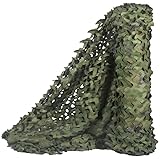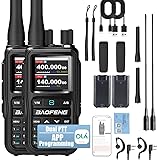Mastering the Unexpected: Advanced Wilderness Survival for the Lost Hiker
Have you ever considered what it truly takes to transform an unplanned overnight stay in the wild into a manageable survival situation? While a day hike promises a return before dusk, the reality of becoming a **lost hiker** demands a profound shift in mindset and a ready skillset. This detailed guide builds upon the practical insights shared in the accompanying video, “Surviving The Wild S01 E06 – Lost Hiker,” offering an expert-level exploration into spontaneous wilderness preparedness and self-rescue techniques.The transition from a casual outing to an unplanned bivouac requires not merely basic gear but also an adaptive philosophy. It is often observed that a primary obstacle in self-rescue is the initial inability to acknowledge the predicament. Admitting, “I am lost,” forms the foundational step toward establishing the calm and clarity necessary for effective decision-making in a **lost hiker** scenario.
1. The Prudent Hiker’s Electronic Preparedness
In contemporary wilderness excursions, the smartphone has evolved into a multi-tool, frequently serving as the primary navigation device due to its integrated GPS and capability to host topographic maps. However, its effectiveness is critically dependent upon battery longevity, which can be rapidly depleted by continuous signal searching in remote areas.
A strategic maneuver, often overlooked, involves the temporary removal of the device’s SIM card. This action severs the phone’s cellular connection, thereby preventing the persistent and battery-intensive search for network service. While this renders communication impossible, the offline GPS functionality, coupled with pre-downloaded maps, remains fully operational, significantly extending the operational duration of the power source. Furthermore, it ensures that your focus remains squarely on the exigencies of survival, free from external distractions.
2. Adopting a Resilient Survival Mindset
The psychological impact of realizing one is lost can be debilitating, often leading to panic or irrational behavior. A core tenet of effective survival is the immediate adoption of a calm, analytical mindset. The initial admission of being lost is not a sign of failure but a crucial acceptance of the current reality, which then allows for proactive engagement with the challenge.
Resistance to this acceptance can manifest as frantic, directionless movement, exacerbating the situation by increasing exhaustion, potential injury, and further disorientation. Seasoned outdoorsmen frequently emphasize that the first hour after realizing one is lost should be dedicated to halting movement, assessing the immediate surroundings, and consciously regulating one’s emotional state. This allows for a more rational evaluation of resources and options available to the **lost hiker**.
3. Leveraging Your Survival Kit: Improvised vs. Prefab
A survival kit, whether meticulously assembled or acquired off-the-shelf, is only as effective as the user’s familiarity with its contents and the willingness to deploy them. The video thoughtfully highlights the distinction between a personal, purpose-built kit and a generic prefab version. A custom kit, curated based on individual experience and anticipated needs, typically contains items known to be useful and with which the user possesses proficiency, such as the numerous fire-starting implements mentioned in the video, reflecting a personal preference for firecraft.
Conversely, prefab kits, while convenient, often contain unfamiliar tools or supplies that may not align with a user’s skill set or specific environment. A common psychological barrier associated with such kits is the reluctance to consume or use items, fueled by the “what if I need this later” fallacy. In a genuine survival scenario, resources must be utilized decisively for immediate needs, prioritizing current challenges over speculative future requirements. For instance, rationing a sandwich over two days when immediate caloric intake is vital for energy expenditure in camp construction is generally considered suboptimal by experts.
4. Crafting Emergency Shelters: Beyond the Basic Lean-To
Shelter construction is paramount for protection against the elements, conserving core body temperature, and maintaining morale. While the lean-to is a fundamental and quickly erected structure, its primary function is often rain and wind deflection, not significant thermal insulation. The video’s innovative “nature’s hammock” concept for a bed, utilizing logs and rocks, exemplifies creative adaptation to local resources, addressing the critical need for insulation from the cold ground.
When constructing any improvised shelter, the “5 W’s” should be considered: **W**ind (protection from prevailing winds), **W**ater (avoiding drainage paths, overhead drips), **W**ood (proximity to building materials and fuel), **W**ildlife (avoiding animal trails or known dens), and **W**ells (access to water). Furthermore, the judicious placement of a crossbar for a lean-to shelter, as demonstrated, must balance overhead clearance for comfort with sufficient angle for water runoff, ensuring the **lost hiker** remains dry.
5. The Versatility of Paracord: More Than Just Rope
Paracord, or 550 cord, is an indispensable asset in any survival kit, revered for its exceptional strength-to-weight ratio. As elucidated in the video, authentic military-grade paracord is characterized by a specific internal structure: seven individual white strands encased within an outer sheath. Each of these core strands is individually rated to withstand approximately 550 pounds of force, lending to its designation as 550 cord.
The remarkable utility of paracord extends beyond its primary function as a lashing or tying material. The ability to separate the inner strands provides a wealth of micro-lines, which can be ingeniously repurposed for tasks requiring fine tensile strength. These can include improvised fishing line, dental floss, snare wire for small game (where legally permissible), or even as a robust, emergency suture material in extreme medical exigencies. Distinguishing genuine 550 cord from lesser imitations, which may feature fewer or weaker inner fibers, is crucial for relying on its stated performance characteristics.
6. Advanced Fire Starting Techniques & Insect Management
Fire is a cornerstone of survival, providing warmth, purifying water, cooking food, and offering psychological comfort. The video showcases the successful use of flint and charcloth, a highly efficient method for generating an ember, highlighting the importance of practice in mastering such techniques. Charcloth, a material created by superheating natural fibers in an oxygen-deprived environment, has a very low ignition temperature, making it ideal for catching sparks.
Beyond rudimentary methods, the mention of attempting a bow drill fire illustrates a commitment to advanced bushcraft. While more challenging to master, the bow drill offers a reliable fire-starting option when modern igniters fail. Moreover, the production of smoke from a sustained fire serves a dual purpose: not only does it signal for help, but it is also an effective natural deterrent against bothersome insects such as wasps and bees, as its pungent aroma disrupts their navigation and respiratory systems, thereby offering a measure of comfort and protection to the **lost hiker** at camp.
7. Essential Water Purification & Sustenance Strategies
Maintaining hydration is critical for cognitive function and physical endurance. The video underscores a key survival principle: the ability to boil water directly in metal water bottles. This simple yet effective method circumvents the need for a separate pot or elaborate purification systems, providing a readily available means to render collected water potable. This technique removes pathogens by sustained heat, making it safer for consumption.
Regarding sustenance, the philosophy presented in the video—prioritizing immediate caloric intake over rationing for an unknown future—is a valid approach, particularly in short-term survival scenarios where high energy expenditure is required for establishing camp and addressing immediate needs. This strategy ensures that the body has the necessary fuel to perform physically demanding tasks and maintain mental acuity, rather than risking energy depletion through insufficient intake by a **lost hiker**.











